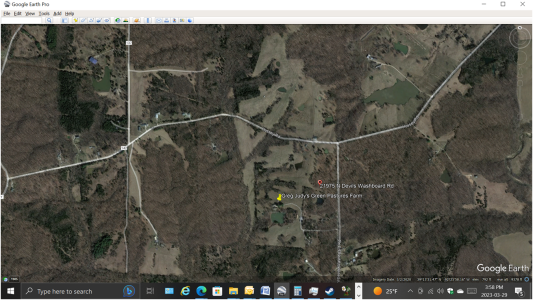What do you really think about Greg Judy's methods? Just be kind and accurately discuss what you like about his new-novel methods.
Personally, my thoughts.....Greg capitalized and is the master of collecting up low-cost leased lands and growing his herd. His breeding program is a bit sketchy with young bulls inter-breeding...not being separated. Greg is a you-tube contributor and master at Media Farm Funding...kudos to him and his family.
Below are items I found i really liked and disliked with Greg's teachings/methods: (just 4 notable items for me)
A.) I liked Greg Judy's bird houses...for fly-eating barn swallows. It's an innovative solution and a functional build.
B.) I liked his method of not buying steel (tractor's, dozers-toys) as a cost savings...minimal steel as a cattle producer equates to more money in your pocket. Although looks are deceiving he has lots of steel toys, ATVs, Trailers and fancy hay unrollers.
C.) Greg Judy's "regenerative grazing"…what a bunch of bunk! Cattle grazing the land and pooing have always been regenerative, helping to seed and improve the pastureland since the beginning of time. They've always known about regenerating improving land with cattle… there's nothing new about that or his books and training school.
D.) Greg Judy's rotational grazing method using hot wires is ridiculous! The reason people use hot wire rotation with cattle is because they haven't addressed three serious issues:
All the big successful cattle producers I know Do Not use rotational hot wires….they provide adequate land for each cow/calf pair and build real fences w/ gates and rotate cattle minimally/monthly into those permanently fenced perimeter areas.
Personally, my thoughts.....Greg capitalized and is the master of collecting up low-cost leased lands and growing his herd. His breeding program is a bit sketchy with young bulls inter-breeding...not being separated. Greg is a you-tube contributor and master at Media Farm Funding...kudos to him and his family.
Below are items I found i really liked and disliked with Greg's teachings/methods: (just 4 notable items for me)
A.) I liked Greg Judy's bird houses...for fly-eating barn swallows. It's an innovative solution and a functional build.
B.) I liked his method of not buying steel (tractor's, dozers-toys) as a cost savings...minimal steel as a cattle producer equates to more money in your pocket. Although looks are deceiving he has lots of steel toys, ATVs, Trailers and fancy hay unrollers.
C.) Greg Judy's "regenerative grazing"…what a bunch of bunk! Cattle grazing the land and pooing have always been regenerative, helping to seed and improve the pastureland since the beginning of time. They've always known about regenerating improving land with cattle… there's nothing new about that or his books and training school.
D.) Greg Judy's rotational grazing method using hot wires is ridiculous! The reason people use hot wire rotation with cattle is because they haven't addressed three serious issues:
- They don't have enough land/acreage to support the cattle's nutritional needs.
- Or they have too many cattle on the land to support the cattle's nutritional needs.
- They don't have any real perimeter fencing- w/paddock gating.
All the big successful cattle producers I know Do Not use rotational hot wires….they provide adequate land for each cow/calf pair and build real fences w/ gates and rotate cattle minimally/monthly into those permanently fenced perimeter areas.

